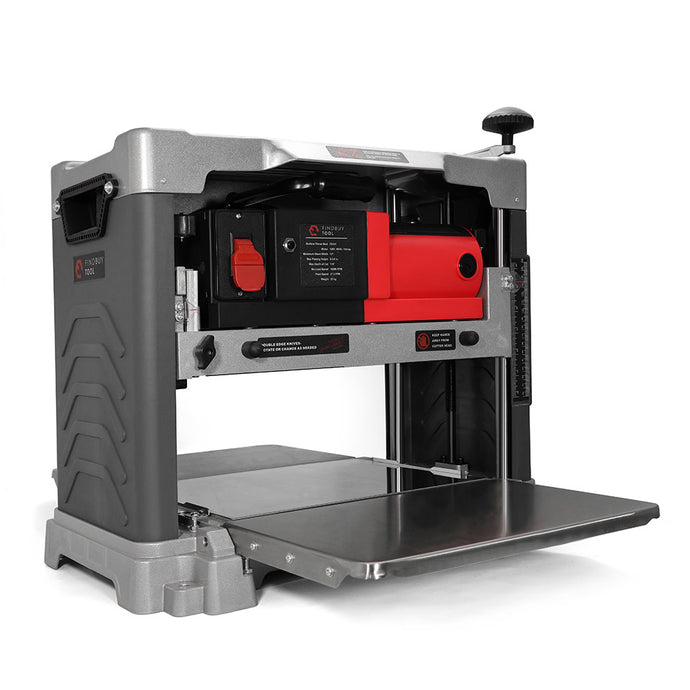For woodworkers, whether hobbyists or professionals, the quest for the perfect, smooth surface on a piece of timber can be time-consuming and challenging. One tool that promises to simplify this task is the planer thicknesser, a versatile machine that combines two critical functions: planing and thicknessing. However, many woodworking enthusiasts, particularly beginners, often find themselves asking, "Is a planer thicknesser worth it?" To answer this, it's important to evaluate the benefits, potential drawbacks, and suitability for your specific needs.
At its core, a planer thicknesser is designed to flatten rough lumber and reduce its thickness to a consistent, uniform level. This is done in two stages: first, the planer side is used to remove high spots and create a flat surface, and then the thicknesser side ensures that the wood is planed to a consistent thickness throughout. This dual functionality makes it an attractive option for woodworkers who need to prepare wood for further milling, joinery, or finishing.
One of the major advantages of a planer thicknesser is the time-saving aspect. Without such a tool, achieving a smooth, even surface on rough lumber can take a considerable amount of time and effort using hand tools or even a single-purpose planer. A planer thicknesser allows you to process large amounts of wood quickly and efficiently. This is especially useful for projects that require multiple pieces of wood with the same thickness or when working with reclaimed wood that may be warped, cupped, or bowed. By providing a consistent thickness across all pieces, the planer thicknesser reduces the need for additional sanding or adjustments, which helps to speed up the overall woodworking process.
Another notable benefit is the versatility of a planer thicknesser. With its ability to handle both surface flattening and precise thicknessing, it is an all-in-one solution that can replace several individual tools in the workshop. For example, instead of needing a separate thickness planer and surface planer, you only need one machine. This can save valuable space, especially in smaller workshops, and also reduce the cost of purchasing multiple tools. For woodworkers who don't have room for a larger, more expensive stand-alone planer, a compact planer thicknesser can offer a practical solution without compromising on performance.
However, like any tool, a planer thicknesser is not without its limitations. One key consideration is the size of the machine and the size of the workpieces it can accommodate. While benchtop models are more compact and suitable for small to medium-sized woodworkers, they often have smaller tables and a more limited capacity for handling larger pieces of timber. If you plan on working with large boards or doing heavy-duty commercial woodworking, a larger, more robust machine may be necessary. Additionally, the thicknessing process involves feeding the wood through the machine, so if you are working with oversized or very thick timber, you may need to invest in a planer with a wider capacity to ensure it can handle the job efficiently.
Another factor to consider is the quality of the finish. While planer thicknessers are great for achieving a consistent thickness, the finish may not always be as smooth as a surface planer, especially when working with very dense or hardwoods. This is because some machines, especially lower-end models, may leave behind slight marks or roughness on the surface of the wood. For most projects, this can be easily addressed with additional sanding, but for those working on fine furniture or high-precision projects, it may be necessary to consider higher-end machines with superior cutters or even separate surfacing tools for the best finish.
The cost of a planer thicknesser is another important consideration. While these tools provide excellent value for those who need both planing and thicknessing capabilities, they can be a significant investment. Entry-level models may start at a few hundred dollars, but for a high-quality, durable machine capable of handling heavier workloads, the price can rise considerably. Additionally, maintenance costs can add up over time, particularly if the cutter blades need to be replaced or sharpened frequently. For hobbyists or beginners with limited budgets, this can be a substantial commitment.
Furthermore, the dust collection system in a planer thicknesser is crucial to maintaining a clean and safe workspace. Planing and thicknessing generate a significant amount of debris, and without proper dust extraction, the workshop can quickly become cluttered. While many planer thicknessers come with dust ports or collection systems, they are not always perfect, and you may need to invest in a separate dust collector to keep the area tidy and safe. Poor dust collection can lead to not only a messy workshop but also health concerns over prolonged exposure to wood dust.
In conclusion, whether a planer thicknesser is worth it depends on your individual woodworking needs, space, and budget. For woodworkers who frequently work with rough lumber or need to achieve precise thicknesses across multiple boards, the time-saving and efficiency benefits are clear. The versatility of a planer thicknesser makes it a valuable tool, especially for smaller workshops where space and cost are at a premium. However, it's important to weigh the size and capacity limitations, potential finish quality, and maintenance costs before making a decision. For beginners, investing in a planer thicknesser can be an excellent way to streamline projects, but it's essential to understand the demands of your projects and the machine's capabilities. Ultimately, for those who need both planing and thicknessing capabilities in one tool, a planer thicknesser is a worthy investment that can enhance your woodworking results and efficiency.


